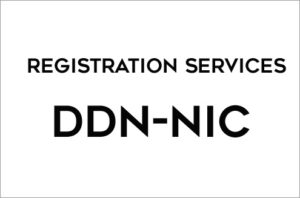
Date: 01/01/1991As the early ARPANET grew, hosts were referred to by names, and a HOSTS.TXT file would be distributed from SRI International to each host on the network. As the network grew, this became cumbersome. A technical solutioncame in the form of the Domain Name System, created by Paul Mockapetris. The Defense Data Network—Network InformationCenter (DDN-NIC) at SRI handled all registration services, including the top-level domains (TLDs) of.mil, .gov, .edu, .org, .net, .com and .us, root name server administration and Internet number assignments under a United States Department of Defense contract. In 1991, the Defense Information Systems Agency (DISA) awarded the administration and maintenance of DDN-NIC (managed by SRI up until this point)to Government Systems, Inc., who subcontracted it to the small private-sector Network Solutions, Inc.
The Defense Data Network Network Information Center (DDN-NIC) at SRI handled all registration services, including the top-level domains mil, gov, edu, org, net, com and us. DDN-NIC also performed root nameserver administration and Internet number assignments under a United States Department of Defense contract starting in 1984.
By the 1990s, most of the growth of the Internet was in the non-defense sector, and even outside the United States. Therefore, the US Department of Defense would no longer fund registration services outside of the mil domain.
The National Science Foundation started a competitive bidding process in 1992; subsequently, in 1993, NSF created the Internet Network Information Center, known as InterNIC, to extend and coordinate directory and database services and information services for the NSFNET; and provide registration services for non-military Internet participants. NSF awarded the contract to manage InterNIC to three organizations; Network Solutions provided registration services, AT&T provided directory and database services, and General Atomics provided information services. General Atomics was disqualified from the contract in December 1994 after a review found their services not conforming to the standards of its contract. General Atomics’ InterNIC functions were assumed by AT&T.